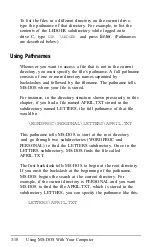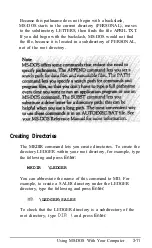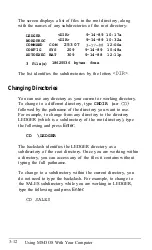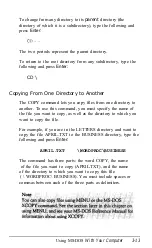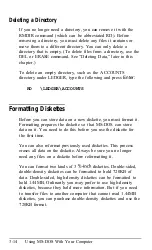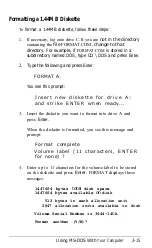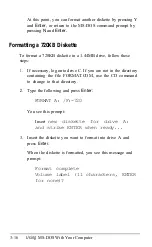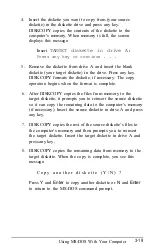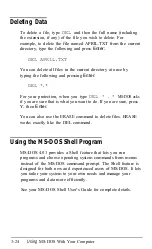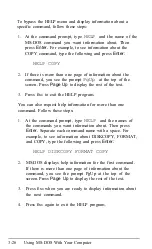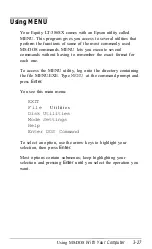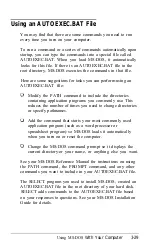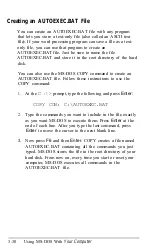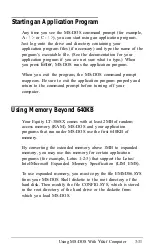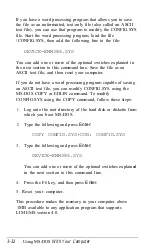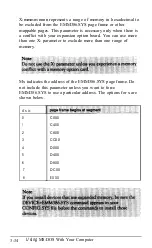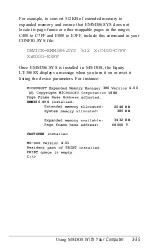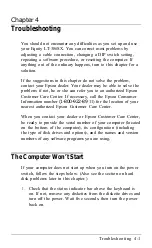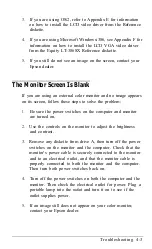
The BACKUP command can perform incremental backups.
That is, you can copy only those files that changed since
the last time you used the BACKUP command. This also
results in more efficient diskette use.
The BACKUP command can format new diskettes as it
copies files. You don’t have to go through a separate
formatting step when you use BACKUP.
Unlike DISKCOPY and COPY, which make readable copies of
files, BACKUP creates files that you cannot use until you
restore them to the disk by using the RESTORE command.
You can use switches with BACKUP to back up files created
after a certain date or to specify files stored in a certain
directory. You can also tell BACKUP to add only those files
that were modified since the last time you ran BACKUP. This
process speeds up the backup procedures you perform on a
regular basis.
For complete instructions on the use of BACKUP and
RESTORE, see your MS-DOS Reference Manual.
Using MS-DOS With Your Computer
3-23
Summary of Contents for Equity LT-386SX
Page 1: ...EQUITY LT 386SX User s Guide EPSON ...
Page 3: ...EPSON EQUITY LTT M 386SX User s Guide ...
Page 183: ... No codes Ignored D 42 System Diagnostics ...
Page 184: ... No codes Ignored System Diagnostics D 43 ...
Page 189: ... No codes Ignored D 48 System Diagnostics ...
Page 190: ... No codes Ignored System Diagnostics D 49 ...
Page 192: ... No codes Ignored System Diagnostics D 51 ...
Page 193: ... No codes Ignored D 52 System Diagnostics ...
Page 194: ... No codes Ignored System Diagnostics D 53 ...
Page 195: ... No codes Ignored D 54 System Diagnostics ...


